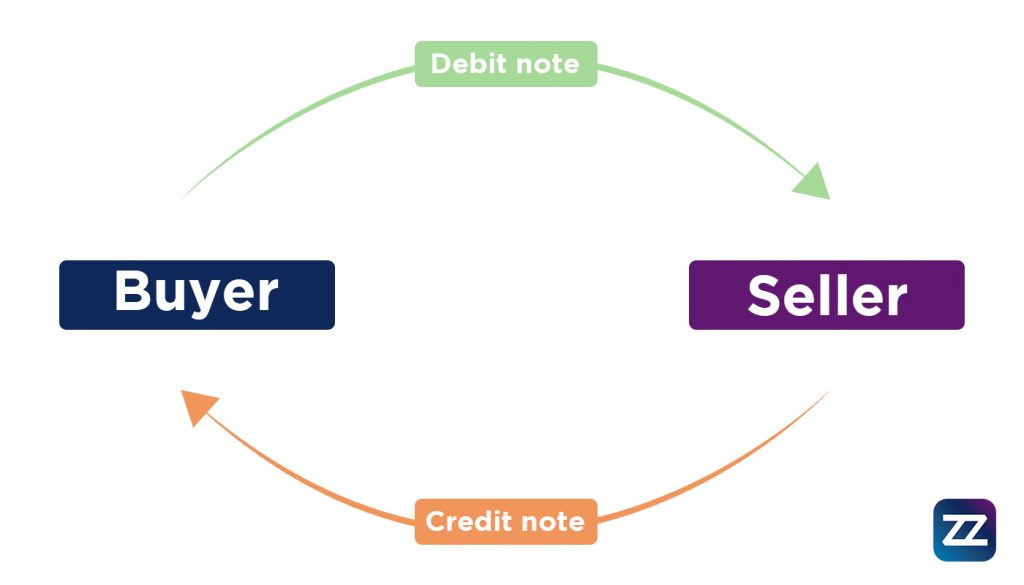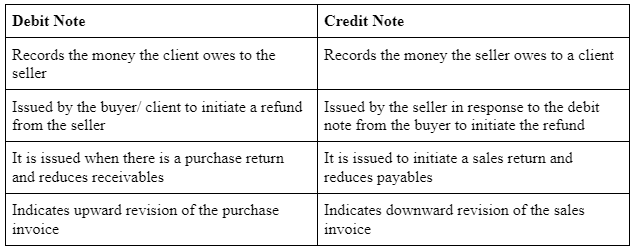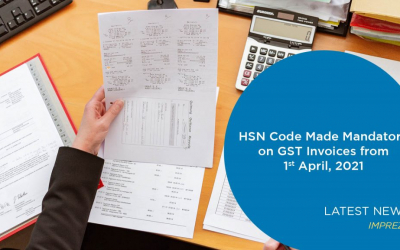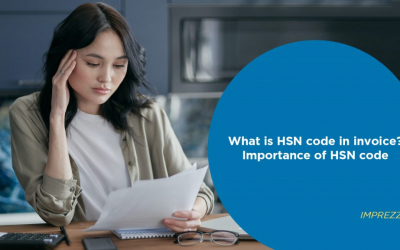Maintaining legally compliant, professional invoices is imperative to the operations of any business. But once you have created an invoice, it may not be the final one as there can be several changes due to various reasons in a single transaction.
Is it possible to edit the invoice n-number of times as and when there’s a change? What is the ideal solution to this predicament? The answer is debit notes and credit notes.
Debit Note and Credit Note: When are these Issued?
 Debit Note
Debit Note
A debit note or a debit memo is a document sent by the buyer to the seller for processing a request to return the funds under special circumstances. A debit note has to be issued before a credit note is issued by the supplier and stands for a formal request from the buyer to issue a credit note.
The buyer can be requesting a partial or full refund of the payment through a debit note under the following circumstances:
- When the supplied goods do not match up to the expected standards of the buyer
- When the goods delivered are not in proper condition — they are damaged or expired, or unfit for use/ sale to the end customer
- Incorrect billing/ miscalculation
- Cancellation of services or product purchase
- When the tax amount or GST is charged at a higher rate than the current applicable rates on the specific products or services at a particular time
All of the reasons mentioned above are valid grounds on which a buyer can send a debit note to the seller for a full or partial refund. The debit note is proof of the purchase return in the buyer’s accounting books.
The debit note denotes the upward revision of prices in an already furnished invoice and also records any future liability that they may have to pay for. It also indicates a change in the taxable value of goods indicated in a tax invoice in case of a revision of taxes.
Credit Note
A credit note or credit memo is a document issued by the seller to indicate a full or partial refund to the buyer. It follows the issuance of a debit note from the buyer. This refund note is issued under the following circumstances:
- Suppose the supplier/ seller has supplied goods or services, not to the satisfaction of the consumer/ buyer in terms of quality or condition. In that case, the buyer might claim a refund by issuing a debit note. In response to the buyer’s debit note, the seller might initiate the refund by issuing a credit note against the existing purchase invoice.
- To initiate a refund due to a miscalculation by the seller in the purchase invoice.
- Revision/ correction of the discount percentage
- Cancellation of order/ pending payments against the initial purchase invoice
- When the tax amount or GST is charged at a rate higher than the applicable rate on specific products or services at a particular time
There are two types of credit notes:
- Credit notes on outgoing payments
- Credit notes on incoming payments
Multiple credit notes can be issued against one purchase invoice, as long as it does not exceed the total amount in the invoice. The credit note issued by the seller to the buyer acts as an indicator of the credit transfer into the buyer’s account.
Credit notes may reflect badly on the accounting history of the seller.
Debit Note and Credit Note: Differences

*Note: A debit note always precedes a credit note in case of a refund.
Use of Debit and Credit Note in GST
According to the GST laws, a debit note can be issued by the supplier if the taxable amount or tax charged in the invoice is less than the actual tax rate. As per section 34(3) of the Goods and Services Tax Act, there are only two situations when the seller or supplier can issue a debit note:
- When the taxable value reflected in the original invoice is lesser than the actual taxable value at the time of the sale
- When the original tax invoice shows less than the expected tax to be paid by the buyer
The GST act defines a credit note as a document issued by the seller when the amount of tax payable according to the original invoice is more than the actual tax rate on the specific goods and services involved in the sale. As per GST laws, a supplier is expected to issue a credit note to the buyer when:
- The original tax invoice that has been issued reflects a taxable value exceeding the current tax rate
- The original tax invoice has been issued, and the tax charged exceeds the actual tax amount to be paid
- In case of return due to dissatisfactory products or services of taxable items
Details to be Included in Debit and Credit Note
- The supplier’s name, address and GSTIN
- An alphanumeric serial number unique to the particular financial year
- Date of issue of the debit/ credit note
- The buyer’s name, address and GSTIN (if registered). If the buyer is not registered, their name and detailed address of delivery would suffice
- The original invoice number against which the debit/ credit note is issued
- The taxable value of goods or services, the rate of tax applicable and the amount of tax debited or credited to the recipient
- The supplier’s signature/ digital signature and a seal/stamp.
How Can Imprezz Help?
For small and large scale business owners, financial management is an all-consuming task that requires a lot of time and attention. Maintaining ledgers, hiring accountants, working on billing, getting the documentation for tax filing in order and so on can drain out the entrepreneur. To save their time and energy, they often hire professional help for their accounting needs which does not come with its challenges.
Imprezz is a cost-effective and efficient solution to all your financial management needs. From day to day bookkeeping to managing sales and purchase invoices, from inventory management to real-time tracking, data security to import articles, Imprezz takes care of all.
The easy-to-create invoicing system of Imprezz makes billing a matter of a few clicks. All you have to do is open an invoice template and feed all the necessary details, company logo, address, client details, amount of transaction, and GST details. After reviewing the whole template, you are all set to carry out transactions once you click the ‘finish’ button. In addition, automated reminders via mail will go to your client once you save their email details.
Issuing debit and credit notes against the issued invoices can be much easier with Imprezz’s invoicing technology. Your records are kept safe and accessible from anywhere; the only thing you need is a device (a computer or a phone) and internet connectivity. So no matter how many revisions, upward or downward, have to be made to your issued invoices, managing the whole invoice editing process will be a cakewalk with Imprezz.
More Blogs By Imprezz:
What is HSN Code in Invoice? The Importance of HSN Code
How can a free Chartered Accountant seat help in efficiently filling GST?


